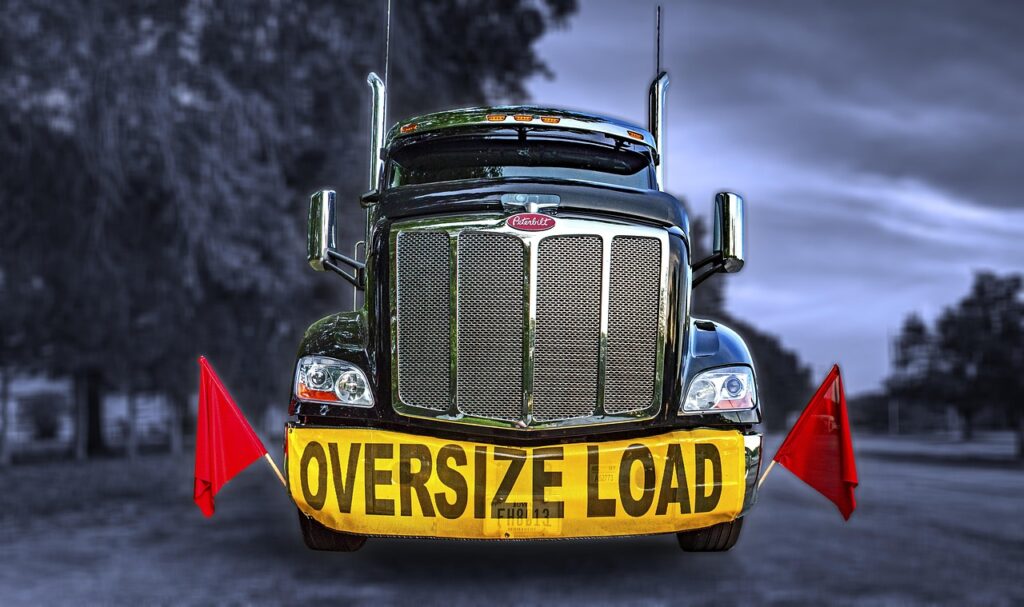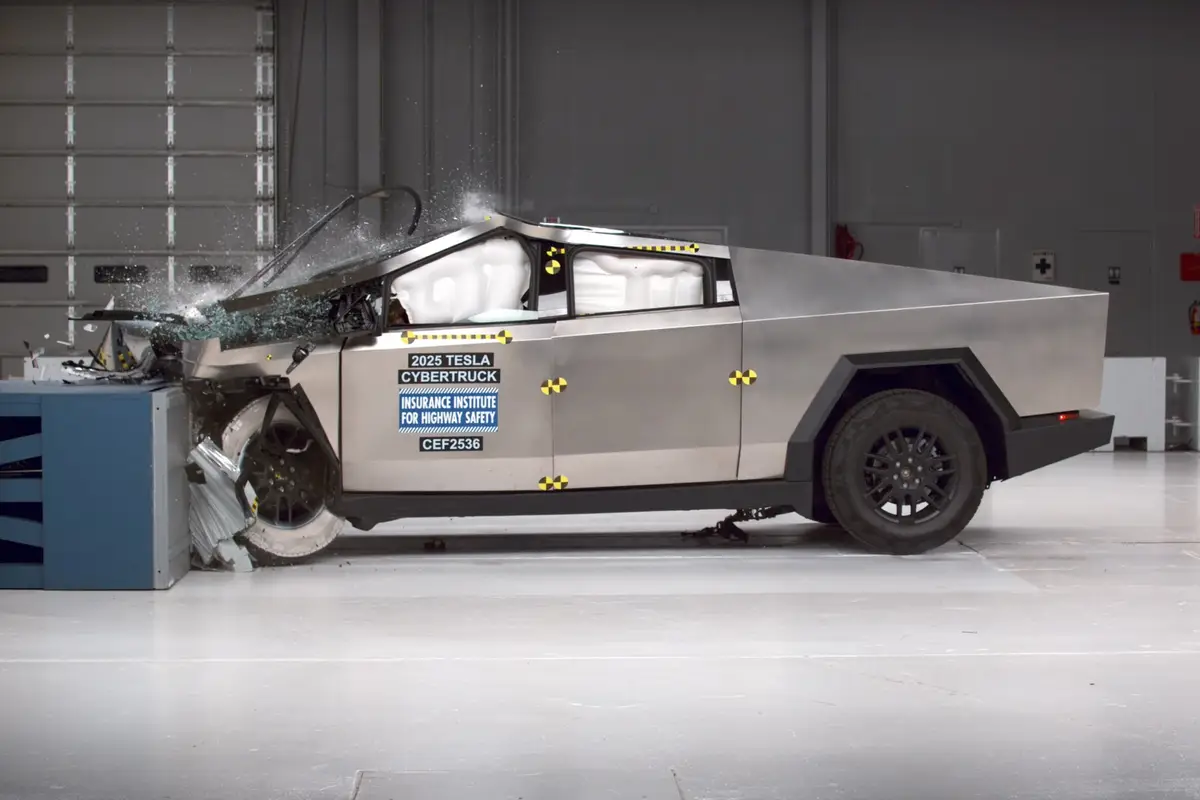Every savvy car shopper knows the thrill of landing a great deal. We pour over reviews, compare models, and spend hours researching the perfect vehicle. Yet, even the most experienced buyers sometimes overlook a crucial piece of leverage that can unlock significant savings: how long a vehicle has been sitting on a dealership lot. This isn’t just a minor detail; it’s a strategic insight that can transform your car-buying experience from a standard transaction into a true steal.
Dealerships, much like any business, operate on tight margins and inventory cycles. A vehicle collecting dust on their lot isn’t just stagnant; it’s a financial drain. This reality creates a unique window of opportunity for informed consumers. By understanding the lifecycle of dealership inventory, particularly what’s termed “aged inventory,” you gain an invaluable advantage at the negotiation table, putting you in the driver’s seat for securing a price well below the initial sticker.
But this isn’t just about sedans and SUVs; the truck market, in particular, often presents some of the most compelling hidden bargains. Whether it’s a nearly-new model from a few years ago or a popular current-year model struggling to find a home, these trucks represent potential goldmines for those in the know. In this in-depth guide, we’ll peel back the layers of dealership inventory, showing you exactly how to identify these diamonds in the rough and how to leverage their prolonged stay into an unbeatable deal on your next set of wheels.
1. **Understanding Aged Inventory: Your Key to Unbeatable Deals**Navigating the world of car dealerships can often feel like a high-stakes game, but knowing the rules can turn the odds squarely in your favor. One of the most potent rules revolves around what the industry refers to as “aged inventory.” This isn’t some obscure technical term; it’s the dealer’s acknowledgment that a particular vehicle has been occupying valuable real estate on their lot for an extended period, typically exceeding 60 to 90 days. For the consumer, this threshold signals a golden opportunity, transforming an ordinary negotiation into a chance to score a truly exceptional price.
The economics behind this are straightforward and entirely logical. When a dealership first receives a new or used vehicle, there’s little incentive to lower the price if demand is high and customers are showing immediate interest. The vehicle is fresh, new, and priced to reflect current market value. However, as the weeks turn into months and a car remains unsold, its appeal naturally wanes, and the likelihood of finding a buyer at the initial asking price diminishes significantly. This is precisely when the dealer’s willingness to “drop prices to help the car sell” begins to increase.
Beyond the simple diminishing demand, dealerships face tangible financial pressures that intensify with aged inventory. Many dealers finance their inventory through what’s known as “floor planning,” which involves paying interest on every unsold vehicle. These interest payments can quickly accumulate, turning a stationary asset into a growing liability. The longer a car sits, the more it costs the dealership, creating a powerful “clear motivator for a dealer to wheel and deal on aging inventory” rather than let it continue to incur costs. This internal pressure is your ultimate bargaining chip.
Understanding this dynamic is the first step toward becoming a truly savvy car buyer. It transforms the question from “what’s the lowest they’ll go?” to “how much do they *need* to sell this car?” By identifying vehicles that have crossed that 60-90 day mark, you position yourself to exploit the dealer’s financial imperatives, enabling you to “swoop in and negotiate the best deal you can.” It’s not about being aggressive; it’s about being informed and strategic.

2. **Unmasking Aged Vehicles: How to Spot a Potential Bargain**Armed with the knowledge that aged inventory presents a prime opportunity, the next critical step is learning how to identify these vehicles. Fortunately, dealerships don’t keep this information under lock and key; with a bit of diligence and strategic observation, you can easily uncover how long a particular car or truck has been gracing the showroom floor or sitting out in the back lot. This intelligence is your secret weapon, allowing you to approach negotiations with confidence and a clear target for discounts.
One straightforward method involves examining the vehicle’s paperwork. When a car arrives at a dealership, its “paperwork and titling” are completed, establishing an arrival date. By reviewing these documents, you can often determine when the vehicle officially entered the dealer’s possession. If the title or other related documents indicate the car has been at the dealership for “60 days or more, you can likely negotiate a good deal.” This is a direct indicator that the vehicle is now considered “aged inventory” by the dealer’s own internal metrics.
Another incredibly powerful tool at your disposal is a comprehensive “vehicle history report from AutoCheck or Carfax.” While most buyers primarily use these reports to check for accidents, flood damage, or previous owners, they also contain another vital piece of information: “when the car was listed for sale.” This date provides a precise timeline of the vehicle’s tenure on the lot. A quick glance can reveal if a car has been lingering for an extended period, instantly signaling it as a potential candidate for a significant price reduction. Dealers are usually “willing to provide a report showing a vehicle’s history,” so don’t hesitate to ask.
Beyond official documents, a “tried-and-true method” for discerning inventory age is simply “watch the inventory.” Online listings, such as those on Autotrader, are constantly updated. By keeping an eye on a specific vehicle over a month or two, you can gauge its selling velocity. “If you see a vehicle listed in a dealer’s Autotrader inventory for more than a month or two, it’s likely that the dealer is slowly becoming more willing to lower the price.” This consistent online presence without a sale is a strong indication that the vehicle is transitioning into, or is already deeply within, the aged inventory category, making it ripe for a compelling negotiation.

3. **The Unique Case of 2019 Zero-Kilometer Trucks: A Time Capsule Opportunity**In the fast-paced automotive world, where new models, updated designs, and advanced technologies emerge annually, finding a brand-new vehicle from several years ago might seem like encountering a relic. Yet, in a fascinating twist of market dynamics, 2019 model zero-kilometer trucks have surfaced in dealerships, presenting what can only be described as a “surprising opportunity window.” These vehicles, despite being produced four years ago, remain in “zero” condition, untouched and unused, akin to “a time capsule” waiting for the right buyer.
This peculiar market segment raises immediate questions: how can a vehicle manufactured in 2019 still be considered “new” and why would it remain unsold for so long? The answers unveil a complex interplay of manufacturing projections, economic shifts, and dealership strategies, all converging to create an exceptional buying situation. For the astute consumer, these trucks are not merely old stock; they are an extraordinary chance to acquire a brand-new vehicle without paying the premium typically associated with the latest model year.
The allure of these 2019 zero-kilometer trucks lies in their dual nature: they offer the pristine, unused condition of a new vehicle combined with the inherent price advantages of an older model year. This unique blend makes them an incredibly attractive proposition, especially for those who prioritize value and functionality over having the absolute latest iteration. It’s a segment that demands a closer look, promising a potential “cazip bir yatırım” for those willing to explore beyond the immediate showroom glitz of current-year models.
We’re talking about genuine factory-fresh vehicles that have simply been bypassed by time and changing market tides. They haven’t been driven, they haven’t been owned, and they carry the same “sıfır kilometre” feel and even the scent of a brand-new car. This untouched state, combined with their model-year age, positions them as a truly distinct offering in today’s vehicle market, waiting to be discovered by the discerning truck buyer.
4. **Why Do 2019 Trucks Remain Unsold? Decoding the Market Factors**The existence of “zero” 2019 model trucks still available for purchase is not a random anomaly; it’s the result of several identifiable forces at play within the automotive industry. Understanding these underlying reasons is crucial for buyers, as it reinforces the legitimacy of the opportunity and helps contextualize the potential savings. These aren’t problematic vehicles; they are simply products of market shifts and strategic decisions that, in hindsight, created an excess supply.
One primary factor contributing to this situation is “aşırı üretim ve yanlış tahminler” (overproduction and misforecasts) by manufacturers. In 2019, the truck segment was highly competitive with “yüksek satış beklentilerinin olduğu bir dönemdi” (high sales expectations). Automakers often plan production years in advance based on projected demand. When actual sales figures don’t meet these expectations, or “pazarın doygunluğa ulaşması nedeniyle fazla stok oluşabilir” (excess stock can accumulate due to market saturation), dealers are left with surplus vehicles that ultimately become aged inventory.
The onset of “ekonomik dalgalanmalar ve belirsizlikler” (economic fluctuations and uncertainties), particularly around late 2019 and early 2020 with the “COVID-19 pandemisinin patlak vermesi” (outbreak of the COVID-19 pandemic), brought the automotive sector to a sudden halt. A significant drop in consumer confidence, widespread showroom closures, and severe supply chain disruptions “araç satışlarını ciddi şekilde etkiledi” (seriously affected vehicle sales). This global event dramatically stalled the planned rapid sale of 2019 models, leaving them on lots far longer than anticipated.
Furthermore, “hızlı model değişimleri ve güncellemeler” (rapid model changes and updates) are a constant in the truck segment. Truck manufacturers frequently introduce major model refreshes or entirely new generations every few years. When a “yeni nesil bir kamyonet” (new generation truck) was launched for the 2020 or 2021 model year, the 2019 models were suddenly perceived as “eski nesil” (old generation). Consumers naturally gravitated towards the newest designs and technologies, making it challenging for dealers to move the previous year’s stock efficiently, despite their “new” status.
Finally, “bayi stratejileri ve stok yönetimi” (dealer strategies and stock management) also play a role. Large dealerships or chains might strategically hold certain models. However, over time, these vehicles become “eski model yılı” (old model year), and space is needed for newer arrivals. This forces dealers to offer “ciddi indirimlerle satışa sunulmasına yol açar” (significant discounts) to clear out the remaining older new vehicles. Sometimes, “özel konfigürasyonlar veya niş pazarlar” (special configurations or niche markets) – unique trim levels, colors, or engine options – might not align with general market preferences, further slowing sales and contributing to their prolonged stay in inventory.

5. **The Financial Edge: Unpacking the Depreciation Advantage of Older New Trucks**One of the most compelling reasons to consider a 2019 zero-kilometer truck is the significant “değer kaybı avantajı (depreciation)” it offers. It’s a well-known fact that “bir araç, showroom’dan ilk çıktığı anda en büyük değer kaybını yaşar” (a vehicle experiences its greatest depreciation loss the moment it leaves the showroom). This initial “amortisman” or depreciation shock typically hits new vehicles hard. However, a 2019 model, despite being technically “sıfır” (zero), has already weathered this initial and most substantial value drop simply by virtue of its model year.
This means that a buyer can acquire a “sıfır” vehicle at a price significantly lower than its original market launch price. This translates to “binlerce dolarlık… bir tasarruf sağlayabilir” (thousands of dollars in savings), particularly for high-value vehicles like trucks. You’re effectively getting a brand-new vehicle but paying a price that reflects its model-year depreciation, allowing someone else to absorb the initial financial hit. This financial arbitrage is a cornerstone of the opportunity presented by these unique vehicles.
Moreover, the “hala ‘sıfır’ olma avantajı” (still ‘zero’ advantage) cannot be overstated. Despite being four years old in terms of model year, “kimse kullanmamış!” (no one has used it!). This ensures that the truck’s engine, transmission, interior, and overall body condition are exactly “fabrika çıkışı gibi” (like factory condition). There are no concerns about previous owners, misuse, or neglected maintenance – you get the untouched quality of a new vehicle, complete with that distinctive “sıfır kilometre” feel and scent.
Adding another layer of confidence, the “fabrika garantisi” (factory warranty) often remains a significant draw. For a vehicle with “sıfır” status, the warranty period typically “aracın ilk tescil edildiği tarihte başlar” (starts on the date the vehicle is first registered). This means that, in many cases, buyers will still benefit from a substantial portion of the original manufacturer’s warranty, providing crucial protection against potential major component failures. This assurance is a notable advantage not typically available when purchasing a true used vehicle, offering peace of mind that is invaluable.
Finally, the inherent “pazarlık payı” (bargaining power) is substantial. Dealers are eager to “eski model yılı stoklarını mümkün olan en kısa sürede eritmek isterler” (liquidate old model year stock as quickly as possible) to free up capital and lot space. This creates an environment highly favorable for buyers, leading to “çok daha geniş bir pazarlık payı” (much wider bargaining room). It’s an excellent chance to negotiate “cazip finansman seçenekleriyle” (attractive financing options) or even “ek aksesuarlarla birlikte” (additional accessories), securing a better overall deal than one might expect for a brand-new vehicle.
6. **Modern Comforts & Proven Reliability: What 2019 Trucks Still Offer**While these 2019 zero-kilometer trucks may not carry the absolute latest model year designation, they are far from antiquated. In fact, 2019 was a robust year for automotive technology, and these vehicles typically come equipped with a suite of “modern özellikler ve güvenlik teknolojileri” (modern features and safety technologies) that remain highly relevant and functional for today’s drivers. This means you’re not just getting a bargain; you’re getting a feature-rich vehicle that meets contemporary expectations for comfort and connectivity.
Prospective buyers can generally expect to find essential conveniences like “geri görüş kameraları” (backup cameras), widely integrated “Bluetooth bağlantısı” (Bluetooth connectivity), and user-friendly “dokunmatik bilgi-eğlence ekranları” (touchscreen infotainment systems). Depending on the original “donanım paketine göre” (according to the equipment package), many of these trucks also boast “gelişmiş güvenlik sistemleri” (advanced safety systems) such as “çarpışma önleme” (collision prevention) and “şerit takip asistanı” (lane keeping assist). These are not niche luxuries but crucial components for a safe and enjoyable driving experience in any modern vehicle.
It’s important to acknowledge that “belki en son nesil model kadar yeni yazılımlara sahip olmayabilirler” (they might not have the newest software like the latest generation model), nor will they feature cutting-edge digital instrument panels or the absolute newest driver-assist algorithms that have emerged in 2023 or 2024. However, for “günlük kullanım için fazlasıyla yeterli ve konforlu özellikler sunarlar” (they offer more than enough comfortable features for daily use). The core functionalities and desirable amenities are firmly in place, providing excellent utility without the latest-model price tag.
Beyond the features, these 2019 models offer the distinct advantage of “kanıtlanmış güvenilirlik” (proven reliability). Having been on the market for a certain period, any “potansiyel erken dönem ‘çocukluk hastalıkları'” (potential early-period ‘childhood diseases’ or manufacturing quirks) that might have existed in the model have typically “üretici tarafından giderilmiş veya biliniyor olmuştur” (been addressed or become known by the manufacturer). This means you benefit from a refined product, benefiting from real-world usage data and any subsequent tweaks, giving you “modelin güvenilirliği hakkında daha fazla bilgiye sahip olabileceğiniz anlamına gelir” (more information about the model’s reliability). It’s a mature product, not a first-year release, offering a stable and trustworthy performance.

7. **Beyond the Bargain: Key Considerations for Older New Truck Buyers**Acquiring a 2019 zero-kilometer truck certainly presents a compelling financial opportunity, but like any strategic purchase, it comes with a set of nuanced considerations that discerning buyers should carefully weigh. While the allure of a brand-new vehicle at a discounted, pre-depreciated price is strong, understanding potential drawbacks ensures a truly informed decision, preventing any surprises down the road.
One critical point of scrutiny involves the ‘Garanti Başlangıç Tarihi’ (Warranty Start Date). Although the truck is ‘sıfır’ (zero-kilometer), the factory warranty typically ‘aracın ilk tescil edildiği tarihte başlar’ (starts on the date the vehicle is first registered). This means that if the vehicle was initially registered in 2019 or early 2020 and then remained unsold, ‘garantinin bir kısmı geçmiş olabilir’ (a portion of the warranty may have expired). It is paramount for buyers to clarify the remaining warranty duration. Some dealerships might offer ‘yenilenmiş’ (renewed) or ‘uzatılmış’ (extended) warranty options, which could mitigate this concern and provide additional peace of mind.
Another aspect to consider is the ‘Teknoloji Farkı’ (Technology Difference). While 2019 models are equipped with robust modern features, they ‘belki en son nesil model kadar yeni yazılımlara sahip olmayabilirler’ (they might not have the newest software like the latest generation model). This extends to cutting-edge digital instrument panels, the very latest infotainment systems, or advanced driver-assist technologies found in 2023 or 2024 models. For buyers whose primary driving factor is having the absolute bleeding edge of automotive tech, this difference, while minor for daily functionality, could be a perceived disadvantage.
Furthermore, ‘Sınırlı Seçenekler’ (Limited Options) are an inherent part of purchasing aged inventory. These trucks are typically remaining stock, meaning that finding the exact desired color, specific trim level, or particular engine configuration might prove challenging. Buyers should approach this opportunity with flexibility, understanding that they might need to compromise on certain aesthetic or specific feature preferences. Moreover, even though unused, the ‘Lastik ve Sıvı Yaşı’ (Tire and Fluid Age) requires attention. Tires, motor oil, and brake fluid can degrade over time, regardless of use. It is crucial to ‘Lastiklerin üretim tarihini kontrol etmek ve gerekirse değiştirmek önemlidir’ (check the production date of the tires and replace them if necessary) and request that ‘araç teslim edilmeden önce tüm sıvıların kontrol edilip gerekirse yenilenmesini talep edin’ (all fluids be checked and renewed if necessary before the vehicle is delivered).
Finally, the ‘Yeniden Satış Değeri’ (Resale Value) is a factor. While buying an older new truck means absorbing less initial depreciation, its model year will inevitably impact future resale value. A 2019 model will naturally command a lower price in the used market compared to a newer model. However, the significantly lower acquisition price often ‘bu farkı dengeleyebilir’ (can balance this difference), making the overall financial outcome still favorable for the initial buyer. Buyers focused on long-term ownership and maximum initial savings will find this less of a concern than those who frequently trade vehicles.

8. **The Perfect Match: Who Benefits Most from These Time Capsule Trucks?**Understanding the specific profile of buyers who stand to gain the most from these unique 2019 zero-kilometer truck opportunities is key to appreciating their market value. These vehicles aren’t for everyone, but for a particular demographic, they represent an intelligent and highly strategic investment, offering significant advantages where it truly counts. It’s about finding the perfect synergy between what the truck offers and what the buyer truly needs.
Foremost among the ideal candidates are ‘Bütçe Bilinçli Alıcılar’ (Budget-Conscious Buyers). For individuals or families looking to minimize the financial outlay of purchasing a new truck, these models offer a ‘harika bir fırsattır’ (great opportunity) to secure a brand-new vehicle at a substantially reduced cost. This appeal extends directly to ‘Küçük İşletme Sahipleri’ (Small Business Owners) who are in search of ‘yeni bir iş aracı’ (a new business vehicle) but are keen to manage their budget effectively. The cost savings can be reinvested into the business, and they may also benefit from ‘Vergi avantajlarından da yararlanılabilir’ (tax advantages).
Another significant group consists of ‘İkinci Araç Arayanlar’ (Second Vehicle Seekers). These are individuals who already possess a primary vehicle but require a secondary truck for ‘yük taşıma veya hobi amaçlı’ (cargo transport or hobby purposes). The lower entry cost of a 2019 zero-kilometer truck makes it an ideal, cost-effective solution for these supplemental needs without the premium associated with the latest models, ensuring functionality without overspending on a less-frequently used asset.
For those who prioritize pragmatism over fleeting trends, the ‘Pratikliği Ön Planda Tutanlar’ (Those Who Prioritize Practicality) will find these trucks particularly appealing. This demographic isn’t ‘en yeni teknolojiye veya en son tasarıma takıntılı olmayan’ (obsessed with the latest technology or design), but rather seeks ‘sağlam, güvenilir ve uygun fiyatlı bir iş veya günlük kullanım aracı’ (a solid, reliable, and affordable work or daily use vehicle). The proven reliability and functional modernity of a 2019 model perfectly align with this value-driven approach, delivering utility without unnecessary expense.
Finally, ‘Değer Kaybından Kaçınmak İsteyenler’ (Those Who Want to Avoid Depreciation) form a core segment of ideal buyers. These individuals are acutely aware that ‘bir aracın ilk büyük değer kaybını başkasının ödemesini isteyenler’ (they want someone else to pay the vehicle’s initial major depreciation). By purchasing a 2019 model that has already experienced its most significant depreciation simply by virtue of its model year, buyers effectively sidestep this substantial financial hit, acquiring a new vehicle at a price that reflects a much more favorable point on the depreciation curve.

9. **The Cybertruck Conundrum: When Innovation Stalls on the Lot**While the concept of aged inventory generally applies to traditional dealerships, the phenomenon of vehicles sitting unsold extends even to direct-to-consumer models, albeit with its own unique complexities. No brand exemplifies this current market dynamic quite like Tesla, particularly with its much-hyped Cybertruck. Despite a futuristic design and considerable buzz, the Cybertruck is now experiencing significant challenges, making it a prime example of a vehicle struggling to find its buyers, even without a traditional dealership network.
Newsweek recently reported that Tesla Cybertrucks are ‘Piling up’ on dealer lots, using compelling language like ‘ballooning inventory levels’ to describe the situation. This imagery evokes the ‘balloons shady car dealers use to festoon dealer lots to create a circus-like atmosphere,’ underscoring the unexpected and rapidly growing surplus. Futurism echoed this sentiment, dramatically stating that ‘Hundreds of millions of dollars worth of Cybertrucks are rotting in dealership lots.’ Such strong phrasing highlights the financial implications and the sheer volume of unsold units.
Tesla’s direct sales model means these trucks don’t technically sit on ‘dealership lots’ in the conventional sense, as the automaker ‘technically doesn’t have any dealerships — selling directly to the public instead.’ However, the underlying issue of unsold inventory remains. This is evidenced by Tesla offering significant incentives, such as an ‘$8,550 discount’ on a Cybertruck AWD, which ’rounds to 10% of the original cost of the vehicle.’ This is a substantial ‘cash on the dash’ discount that signals a clear intent to move inventory, a strategy often reserved for aged models at traditional dealerships.
Further compounding the situation, Mashable reports that ‘Tesla has reportedly stopped accepting Cybertrucks trade-ins as unsold trucks pile up.’ This is a particularly stark indicator of market saturation and lack of demand. If even the manufacturer is reluctant to take in used units of its own model, it speaks volumes about the current consumer perception and resale viability. John Goreham, an expert vehicle tester, observes, ‘By all appearances, the Cybertuck, like all battery-electric pickup trucks in America, has been soundly rejected by consumers.’ This assessment points to a broader trend of consumer hesitancy toward all-electric trucks, with the Cybertruck being a prominent casualty of this market resistance.
Car Model Information: 2024 Tesla Cybertruck All-Wheel Drive
Name: Tesla Cybertruck
Caption: 2024 Tesla Cybertruck, Foundation Series
Manufacturer: Tesla, Inc.
Production: November 2023 – present
ModelYears: 2024–present
Assembly: Austin, Texas
Designer: unbulleted list
Class: Pickup truck
BodyStyle: crew cab
Layout: unbulleted list
Transmission: Single-speed fixed (15:1 ratio)
ElectricRange: cvt
Wheelbase: cvt
Length: cvt
Width: cvt
Height: cvt
Weight: Unbulleted indent list
Sp: us
Charging: unbulleted list
Battery: val
Motor: unbulleted indent list
Categories: 2020s cars, All-wheel-drive vehicles, All Wikipedia articles written in American English, All articles containing potentially dated statements, All articles with unsourced statements
Summary: The Tesla Cybertruck is a battery-electric full-size pickup truck manufactured by Tesla, Inc. since 2023. It was first unveiled as a prototype in November 2019, featuring a distinctive angular design composed of flat, unpainted stainless steel body panels, drawing comparisons to low-polygon computer models.
Originally scheduled for production in late 2021, the vehicle faced multiple delays before entering limited production at Gigafactory Texas in November 2023, with initial customer deliveries occurring later that month. As of 2025, three variants are available: a tri-motor all-wheel drive (AWD) model marketed as the “Cyberbeast”, a dual-motor AWD model, and a single-motor rear-wheel drive (RWD) “Long Range” model. EPA range estimates vary by configuration, from 320 to 350 miles (515 to 565 km).
As of 2025, the Cybertruck is sold in the United States, Mexico, Canada and South Korea. The Cybertruck has been criticized for its production quality and safety concerns while its sales have been described as disappointing.
Get more information about: Tesla Cybertruck
Buying a high-performing used car >>>
Brand: Tesla Model: Cybertruck
Price: $75,619 Mileage: 2,133 mi.
10. **The Hidden Costs of Inactivity: Problems with Trucks That Sit Too Long**While the focus on aged inventory often centers on the financial opportunities for buyers, there’s a crucial flip side: the tangible damage that occurs when a vehicle, particularly a truck, sits unused for extended periods. This isn’t just about financial depreciation; it’s about physical deterioration. The adage ‘use it or lose it’ rings true for mechanical marvels, as ‘long-sitting vehicles can develop issues with the wheels, lubricating system, cooling system, suspension, and much more,’ leading to ‘premature component failure.’
Among the most common and immediately noticeable problems are flat tires. ‘Nothing is more heartbreaking than going outside to find that your tires are flat.’ When tires sit in the same spot, especially in colder climates, they can develop hard spots, known as ‘flat spots,’ which affect ride quality and tire integrity. Compounding this, the fuel system is vulnerable: ‘The gas gets sour.’ Gasoline has a limited shelf life of ‘about three to six months.’ Beyond this, it can lead to ‘a clogged fuel filter or a destroyed fuel pump,’ neither of which is a cheap fix, underscoring the importance of regularly burning existing fuel.
Another frequent culprit of inactivity is the battery. ‘Car battery death is another problem that occurs when vehicle owners leave their cars parked for extended periods.’ Batteries experience ‘parasitic drain’ even when the car is off, and without the alternator recharging them through regular use, they quickly lose their charge. Furthermore, ‘Fluids start to leak.’ Seals, often made of rubber, ‘begin to deteriorate and lose its effectiveness when sitting in a car for a long time’ due to lack of lubrication and exercise. This can result in ‘several new oil leaks once the car goes back on the road,’ signaling broader issues with rubber components throughout the vehicle.
Beyond mechanical concerns, sitting vehicles become attractive targets for unwelcome guests. ‘Pests create nests.’ Rodents, insects, and even larger animals seek shelter, transforming your engine bay into ‘forever homes.’ This is not just a nuisance; these pests ‘can chew and scratch hoses, brush up against components and contaminate the engine by relieving themselves in the bay,’ causing significant and costly damage. Simultaneously, ‘The brakes get rusty.’ Rotors, typically made of steel, lack anti-corrosion properties. Inactivity allows ‘superficial rust’ to develop, which, while sometimes cleared by driving, can deepen over time and affect braking performance and safety.
Even internal engine components suffer. ‘Engine components get dry’ because oil settles, leaving critical moving parts unlubricated. This ‘usually happens to older cars that sit for years’ but contributes to ‘other rusting problems occur’ in areas like the gas tank, suspension, and exhaust systems. Finally, ‘Filters get dusty,’ leading to ‘difficulty starting your car or a loss of power due to dirty and clogged air filters.’ A sitting vehicle acts as a dust magnet, and while a new air filter is an inexpensive fix, it points to a broader need for vigilance against the effects of prolonged idleness.
11. **Proactive Preservation: Essential Tips for Storing Your Truck**Given the myriad issues that can arise when a vehicle sits for extended periods, proactive measures are essential to mitigate damage and preserve its condition. Whether you’re letting your truck sit for a few weeks or several months, implementing proper storage and maintenance strategies can significantly reduce the risk of costly repairs and ensure your vehicle is ready to go when you are. It’s about being smart and consistent with care.
The most fundamental guideline is to avoid prolonged idleness: ‘The rule-of-thumb practice is to avoid leaving your car sitting for more than two weeks.’ For optimal results, however, consistency is key; take your truck out ‘once every week or even every couple of days.’ Even short drives can make a substantial difference in circulating fluids, charging the battery, and preventing flat spots on tires. The principle is clear: ‘The more you let your car do some work, the less likely you’ll experience the issues mentioned earlier.’
When it comes to location, ‘The most protective thing you can do if you’re going to allow your car to sit is to park it in a garage.’ This provides crucial protection from ‘overly cold or hot temperatures’ and shields it from environmental elements such as rain, snow, and sleet, which accelerate corrosion and deterioration. If garage storage isn’t an option, a quality car cover can offer some external protection, though it won’t prevent internal issues.
For those without garage access or planning a longer storage period, more active maintenance is required. At the very least, ‘Consider starting it up… and letting the alternator charge the battery and the oil and coolant run through the engine’s systems for 20 minutes.’ This ensures vital fluids circulate, seals remain lubricated, and the battery maintains a charge, staving off common problems like fluid leaks and battery death. Adding ‘high-mileage oil’ can also be beneficial for older engines, as some brands contain chemicals that swell and strengthen seals.
The best strategy, however, is to not just start the vehicle but to drive it. ‘Driving the car down the road will be more helpful because you’ll clean your brakes and solve the flat tire spots at the same time.’ A short drive, perhaps 10 miles, can effectively remove ‘superficial rust’ from brake rotors and reshape tires that have developed flat spots. Before extended storage, it’s also wise to top off the fuel tank with a fuel stabilizer to prevent ‘sour gas’ issues, and ensure tire pressures are slightly elevated to counteract natural air loss.
12. **More Than Just Trucks: Other Models Lingering on Lots (Q1 2025)**While the focus of this exploration has been heavily on trucks, the phenomenon of vehicles accumulating on dealer lots is not exclusive to this segment. Indeed, a variety of models, from luxury SUVs to economical sedans, can find themselves collecting dust for various reasons, presenting equally compelling opportunities for smart shoppers. Data from Q1 2025 reveals several other vehicles that have experienced extended stays, making them potential targets for significant discounts as dealers look to ‘move the metal.’
One such luxury crossover is the **2025 Land Rover Range Rover Velar**, which averaged ‘111 days sitting’ on lots. Despite a ‘mild makeover the previous model year,’ its ‘niche design’ and ‘planted wide-and-low stance’ may not appeal to all, contributing to its longer stay. However, it upholds ‘Land Rover tradition of luxury’ with modern touches like a ‘curved 11.4-inch infotainment system’ and a potent ‘3.0-liter turbocharged inline-6’ delivering 395 horsepower, racing to 60 in 5.2 seconds. With an MSRP starting at ‘$62,975,’ its prolonged stay hints at negotiation room for a discerning buyer seeking style and performance.
Next, the **2025 Audi SQ7** recorded an average of ‘112 days sitting.’ Audi’s sales have been ‘flagging recently,’ making the SQ7 a potential steal. This luxurious three-row SUV boasts ‘500 good reasons’—horsepower from a twin-turbo V8 that rockets it from 0 to 60 in ‘a mere 4 seconds.’ Beyond straight-line speed, it offers ‘all-wheel steering and a sport suspension as standard equipment,’ along with quintessential ‘German luxury’ like ‘ventilated massaging seats’ and ‘Bang & Olufsen audio.’ With a suggested price of ‘$92,095,’ its time on the lot suggests an opportunity to acquire a high-performance luxury SUV at a more attractive figure.
The mainstream segment also sees models like the **2025 Chevrolet Malibu**, averaging ‘116 days sitting.’ This is ‘last call for the Chevrolet Malibu,’ as it’s being retired after the 2025 model year due to ‘increased demand for SUVs and trucks.’ Even without dealer incentives, the Malibu ‘stands out as an impressive value at its full MSRP of only $26,995.’ It offers ‘standard content such as an 8-inch touchscreen, wireless Android Auto/Apple CarPlay, Wi-Fi compatibility, and a bundle of safety tech led by automatic emergency braking,’ presenting an affordable and well-equipped option before its final exit.
Following closely, the **2025 Audi A4** logged ‘118 days sitting,’ a recurring presence ‘on the list of longest-waiting new cars’ from 2023. Despite being touted as Audi’s ‘top-selling sedan,’ its extended stay benefits shoppers. Pricing ‘opens at $45,395,’ making it competitive against rivals. It’s described as a ‘dynamic daily driver that can hit 60 in 5.2 seconds thanks to its 261-horsepower turbo engine and quattro all-wheel drive,’ and features a ‘spacious, modern cabin’ with ‘high-tech safety measures.’ Finally, the **2025 Volvo S60** showed the longest average wait at ‘132 days sitting.’ This ‘Sino-Swedish brand’ is putting ‘a stake through that sedan after the 2025 model year,’ making it another ‘last call’ opportunity. With an MSRP of ‘$43,795,’ it delivers a ‘sport-sedan spirit matched with premium technologies,’ including a ‘turbocharged 2.0-liter engine’ (247 horsepower, 0-60 in 6.2 seconds) and Volvo’s renowned ‘famously focused approach to safety’ with advanced driver-assistance systems.
As we’ve journeyed through the intricacies of automotive inventory, it becomes clear that the dealerships’ challenges can be the savvy buyer’s greatest advantage. From understanding the aging process of inventory to navigating the unique opportunities of older new models and even recognizing when cutting-edge designs face market resistance, the path to a significant steal is paved with knowledge and strategic insight. Whether it’s a forgotten truck from a previous model year or a luxury sedan waiting patiently for its match, the opportunity to secure a deal well below the initial sticker price is always within reach for those who know where—and how—to look. Keep these insights in your toolkit, and your next vehicle purchase could be your smartest yet, transforming a simple transaction into an unparalleled financial victory.









